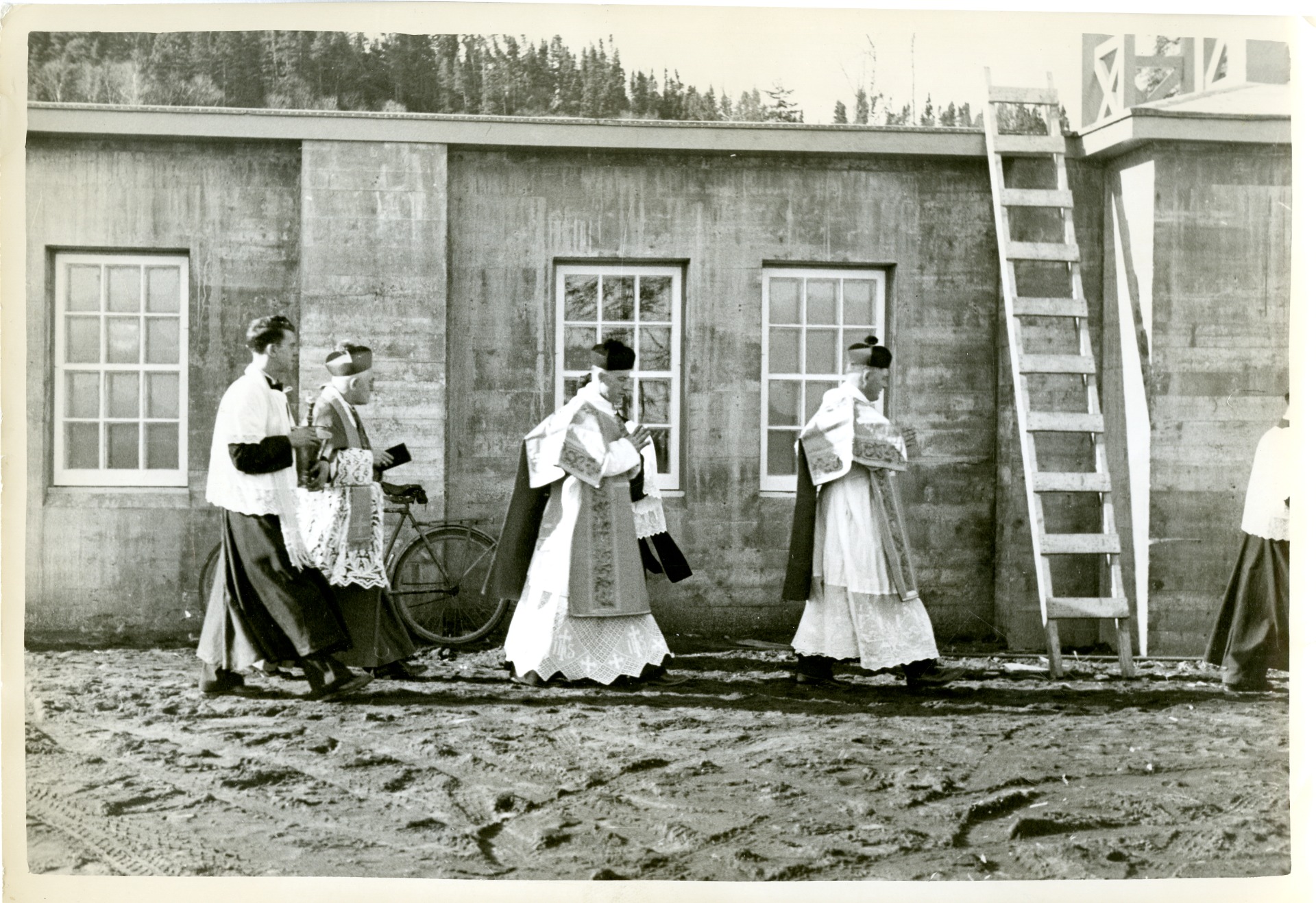
The compelling story of a remarkable little church
The historical origins of the Sainte-Amélie Church go back to 1937, when Colonel Robert Rutherford McCormick, editor-in-chief and owner of the Chicago Tribune, undertook to build a state-of-the-art pulp and paper mill in a remote part of the North Shore region.

Sainte-Amélie Church welcomed the first faithful in 1940 and Mass was celebrated for the first time on June 19 of that same year. At the time, the interior of the church had yet to be given the distinctive style it has today. Shortly before the building was consecrated, the Colonel had expressed a willingness to pay tribute to the artistic taste of his late wife who had died the year before. He wanted to fund a beautiful, large-scale work as a memorial to her. Without his vision, this magnificent décor would therefore never have been possible.
Artist Guido Nincheri began work on the frescoes in 1940, completing them in 1945. The installation of the stained-glass windows was completed in 1959.
